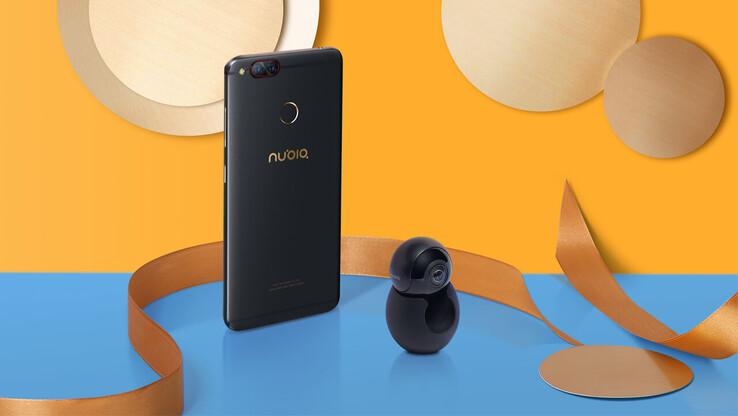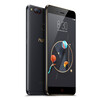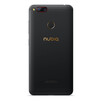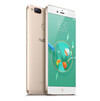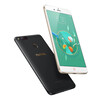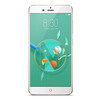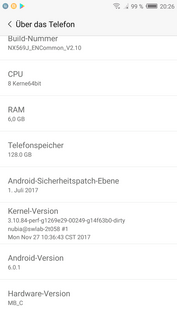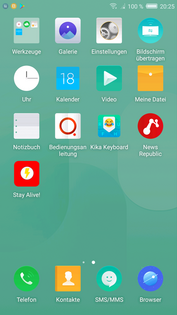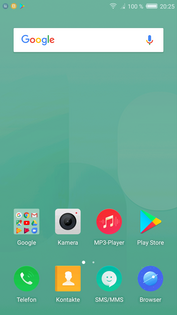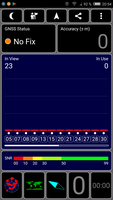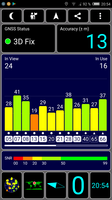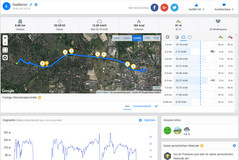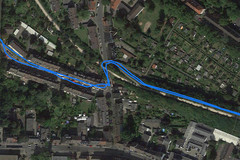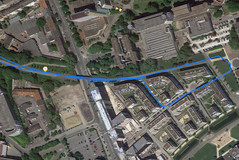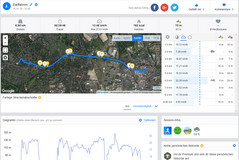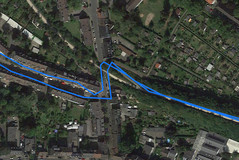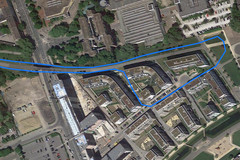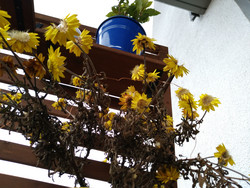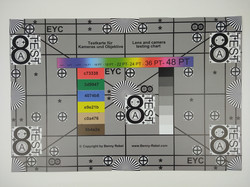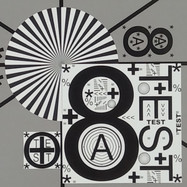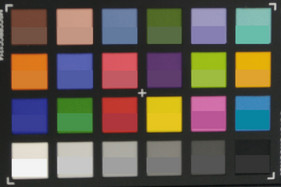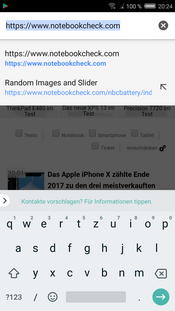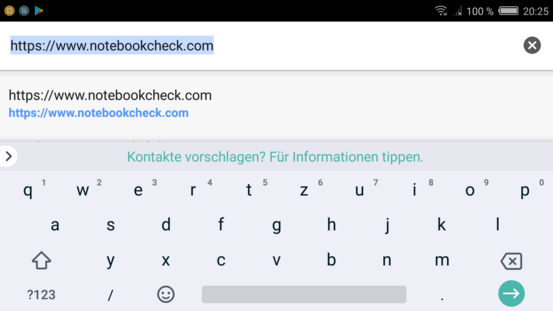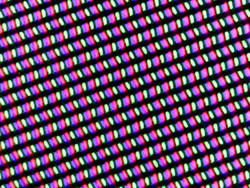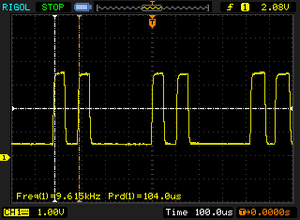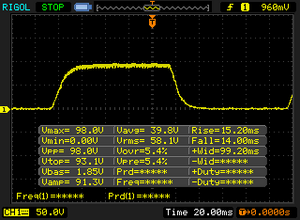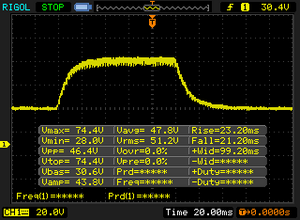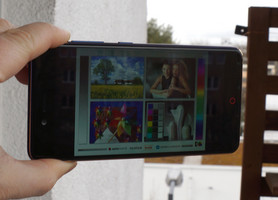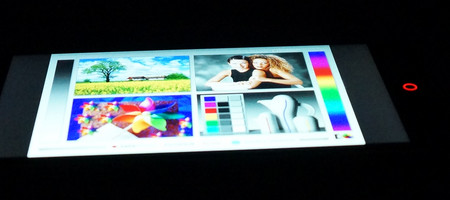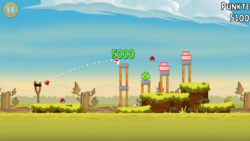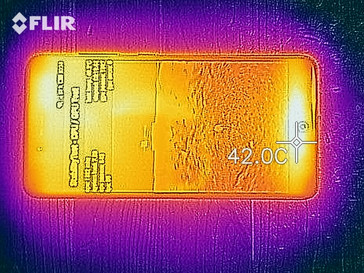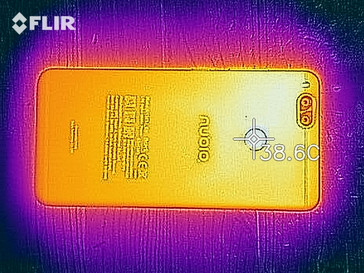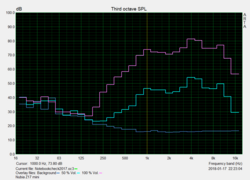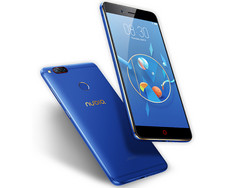Nubia Z17 Mini Smartphone Review
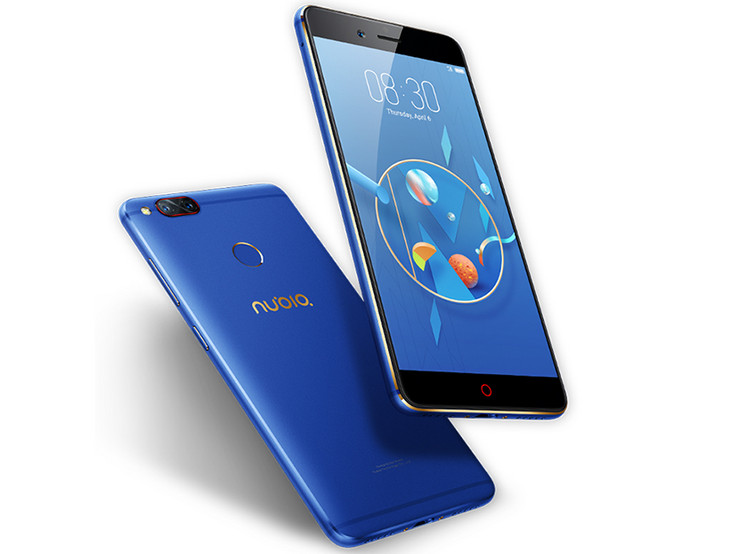
Nubia is a Chinese smartphone manufacturer, established in 2012. Unlike other Chinese manufacturers, Nubia devices can now be easily purchased in Europe with full manufacturer's warranty. The Nubia Z17 Mini, which we will be taking a closer a look at in this review, is a mid-range smartphone with a 5.2-inch screen and a recommended retail price of €349 (~$427). We will be looking at the blue special edition of the device, which currently can be found online for around €290 (~$355) and comes with 128 GB of storage and a generous 6 GB of RAM.
There are some similar sized smartphones in this price bracket such as the HTC U11 Life, the Motorola X4, the Huawei Nova 2 or the Honor 9, against which we will compare the Nubia Z17 Mini.
Case
As well as our blue version with golden edges there are two other versions, a black version also with gold edges and a white model with a rose gold back. It is worth bearing in mind though that the other variants offer only 4GB of RAM. The case is milled from a single piece of metal and looks stylish. We really like the round corners and pronounced edges, and the Nubia Z17 is also very good in the hand. The rigidity of the device is average, so there are visible signs on the display when pressure is applied to the front of the device. However, the back is very rigid. This is echoed when the device is twisted as the Z17 Mini only creaks quietly. With a thickness of 7.5 mm (~0.3 in) the device is relatively slim, to the extent that the dual-camera protrudes slightly from the back of the device.
Connectivity
128 GB of storage and 6 GB of RAM are rare in this price bracket, with combinations of either 32 GB/3 GB or 64 GB/4 GB being the norm. Moreover, the connectivity of the Nubia Z17 mini is comprehensive since Nubia has included NFC, USB-OTG, Dual-SIM and a microSD card slot. Unfortunately, choosing to expand the Nubia's storage with a microSD card will entail the sacrifice of one of the nano-SIM slots since it is not possible to use two SIMs and a microSD card simultaneously.
Software
Nubia has opted for a relatively outdated version of Android, namely Marshmallow 6.0.1. Furthermore, the Android security patches were not up to date at the time of testing. These dated July 1st 2017, which were already six months out of date. A system update was not available, and while Nubia has promised an update to Nougat on their Facebook page, they have given no timeline for this.
Nubia applies its own UI on top of Android Marshmallow 6.0.1, which also includes its own File Manager, Music Player and Video Player. Fortunately, only a few applications are pre-installed and no advertising applications are included. However, all of Nubia’s applications ask for intrusive and unnecessary rights permissions. For example, the Video Player requested access to SMS while the Calendar requested full permissions “in order to be able to offer us a better service”. The associated privacy concerns of giving up so much personal data unnecessarily, induced our editorial staff to use the many existing open source variants in the Google Play Store instead.
Communication and GPS
All current Wi-Fi standards are supported and the speed of the Nubia Z17 Mini is relatively high compared with equally expensive devices. This is at least the case in our standardized benchmark with the Linksys EA 8500 as a reference router. Yet in practice websites will only load without delay in close proximity of the router. After all, the Z17 Mini does have full signal strength there. However, we found that only a quarter of the signal strength is available when we tested the device ten meters (~33 ft) and three walls away from the router, resulting in websites loading very slowly.
In terms of mobile data, the Nubia Z17 Mini is well equipped, with ten LTE frequency bands that would work across Europe and a maximum speed of 300 MBps.
| Networking | |
| iperf3 transmit AX12 | |
| Motorola Moto X4 | |
| HTC U11 Life | |
| Nubia Z17 mini | |
| Honor 9 | |
| Huawei Nova 2 | |
| iperf3 receive AX12 | |
| Nubia Z17 mini | |
| Motorola Moto X4 | |
| Honor 9 | |
| HTC U11 Life | |
| Huawei Nova 2 | |
The Nubia Z17 Mini could not maintain a GPS signal or locate our editorial staff inside buildings. Even when outside the Nubia has a mediocre accuracy of thirteen meters (~43 ft). The location on Google Maps works well and locates relatively fast, while the compass is also reasonably accurate.
Our editorial staff measured the Nubia Z17 Mini’s GPS precision by comparing its accuracy with a Garmin Edge 500 over a nine-kilometer (~5.6 mi) bike ride. The Nubia Z17 Mini measured the overall distance covered as being thirty meters (~98 ft) less than the Garmin Edge 500. While this is ok, the Nubia Z17 Mini’s location placement was often doubtful throughout the course and as such we would not recommend relying too much on the Nubia if you navigate frequently.
Phone Function and Call Quality
Nubia has installed its own Phone application that focusses primarily on the keypad while arranging contacts and call history into easily accessible tabs that sit above the keypad. There are also many options, but unfortunately some are not completely translated from English to other languages. For example, the option for sorting contacts when the Nubia is set to German remains ‘sort order’ rather than the German translation.
The call quality is pretty good. The earpiece gets quite loud and voices are reasonably clear. At a regular call volume everything is intelligible. Unfortunately, there is some distortion with very loud voices and the microphone also picks up minor background noise. Overall, the sound quality when talking on the speaker phone is ok, despite the poor positional quality of the microphone and the somewhat thin sound.
Cameras
Nubia is aiming for its devices to be distinguished particularly in terms of camera quality and detailed photo software. On the rear of Nubia Z17 Mini are dual 13 Megapixel cameras, one color and one monochrome sensor, the combination of which should produce better low-light results. It is worth noting that it is possible to shoot with only the monochrome sensor too. Pictures that are taken in bright light seem a little pale and produce significantly less details than pictures taken with either an iPhone X or the OnePlus 5T. For a mid-range smartphone, the photo quality is acceptable though. In low light the cameras work well, producing results that are good, but a little blurry compared with higher quality cameras.
Videos can be recorded up to a maximum 4K quality with the main camera. The brightness sensor reacts relatively quickly, although not always exactly to changing light conditions, while details are washed out despite the very high recording resolution.
The front camera has a 16 Megapixel sensor and takes pictures that while lacking detail and being somewhat blurry, are well lit.
Even if the descriptions within the camera software may not have been translated perfectly, there are a variety of modes including a manual mode, 3D panoramic recording, image overlays, and slow-motion video recording among others.
Our editorial staff then tested the main camera again, but this time in the lab under controlled lighting conditions. This test produced a slight blur over the entire image, with colors looking flat and the transitions being somewhat pixelated. Tones are relatively accurate compared with the reference color space, although whites have a distinct brownish tint.
Accessories and Warranty
In addition to a quick charger and a USB-C cable the box includes a card for the twenty-four-month warranty, a quick guide and a SIM tool. Unfortunately, suitable accessories for the Nubia Z17 Mini cannot be found on Nubia’s website.
Please see our Guarantees, Return Policies and Warranties FAQ for country-specific information.
Input Devices and Operation
Google’s GBoard comes pre-installed, which as a proven keyboard app, offering the most important options.
The touch screen is responsive, even in the corners. The Nubia Z17 Mini has a trick up its sleeve to separate it from the competition. The edges of the screen have been designed to support gesture controls. However, the success of triggering these commands often proved difficult. For example, screen brightness can be adjusted by swiping either up or down on both sides of the screen. Unfortunately, this feature did not work despite repeated attempts. In addition, applications can automatically be closed by swiping from the right edge to the middle of the screen; this too often proved difficult to trigger. Our tests presented two practical problems with Nubia’s implementation of gesture controls with the Z17 Mini. Firstly, navigating through Android and a variety of applications accidentally triggered the Z17 Mini’s gestures. Moreover, some of the pre-assigned commands clashed with controls within certain applications such as swiping in from one side of the screen. Doing so would trigger the app command rather than the Z17 Mini’s gesture controls. Overall, successful use of the device’s gesture controls would require a lot of practice. It may be easier to just switch them off as they do not provide any essential new features.
The Nubia Z17 Mini has capacitive touch buttons located under the screen. It is worth noting that the back button is located on the right-hand side, which Western users may find odd at first. Otherwise, the touch buttons are reliable while the hardware buttons on the right-hand side of the device are responsive, have a good feel to them and require a good amount of pressure to activate them.
The fingerprint sensor is located on the back and reacts quickly, unlocking the device from standby.
Display
The 5.2” screen is an IPS panel with an average brightness measuring 406 cd/m². This puts the Nubia Z17 Mini far behind similarly prices devices. The brightness distribution is consistent at 91%, so that even large areas of the same color appear uniform to the naked eye.
We measured a relatively low screen flicker frequency of 442 Hz on the Z17 Mini. The frequency at which the screen flickers is relatively high and should only cause problems for those who are sensitive to PWM.
| |||||||||||||||||||||||||
Brightness Distribution: 91 %
Center on Battery: 405 cd/m²
Contrast: 664:1 (Black: 0.61 cd/m²)
ΔE ColorChecker Calman: 6.5 | ∀{0.5-29.43 Ø4.78}
ΔE Greyscale Calman: 7.4 | ∀{0.09-98 Ø5}
Gamma: 2
CCT: 8329 K
| Nubia Z17 mini IPS, 1920x1080, 5.2" | Motorola Moto X4 LTPS IPS, 1920x1080, 5.2" | HTC U11 Life SLCD, 1920x1080, 5.2" | Honor 9 IPS/LTPS, 1920x1080, 5.2" | Huawei Nova 2 IPS, 1920x1080, 5" | |
|---|---|---|---|---|---|
| Screen | 21% | 31% | 44% | 19% | |
| Brightness middle (cd/m²) | 405 | 469 16% | 545 35% | 550 36% | 481 19% |
| Brightness (cd/m²) | 406 | 479 18% | 526 30% | 535 32% | 487 20% |
| Brightness Distribution (%) | 91 | 86 -5% | 87 -4% | 92 1% | 97 7% |
| Black Level * (cd/m²) | 0.61 | 0.37 39% | 0.42 31% | 0.42 31% | 0.48 21% |
| Contrast (:1) | 664 | 1268 91% | 1298 95% | 1310 97% | 1002 51% |
| Colorchecker dE 2000 * | 6.5 | 5.5 15% | 4.9 25% | 3.3 49% | 5.2 20% |
| Colorchecker dE 2000 max. * | 9.3 | 10.7 -15% | 8.5 9% | 4.5 52% | 8.7 6% |
| Greyscale dE 2000 * | 7.4 | 6.7 9% | 5.4 27% | 3.6 51% | 6.8 8% |
| Gamma | 2 110% | 2.1 105% | 2.31 95% | 2.38 92% | 2.31 95% |
| CCT | 8329 78% | 8064 81% | 7610 85% | 7226 90% | 8149 80% |
* ... smaller is better
Screen Flickering / PWM (Pulse-Width Modulation)
| Screen flickering / PWM detected | 441.5 Hz | ||
The display backlight flickers at 441.5 Hz (worst case, e.g., utilizing PWM) . The frequency of 441.5 Hz is relatively high, so most users sensitive to PWM should not notice any flickering. However, there are reports that some users are still sensitive to PWM at 500 Hz and above, so be aware. In comparison: 53 % of all tested devices do not use PWM to dim the display. If PWM was detected, an average of 8125 (minimum: 5 - maximum: 343500) Hz was measured. | |||
We measured the black level at a relatively high 0.61 cd/m². This means that dark areas on the screen look somewhat gray. The low luminosity of the display reduces the contrast to 664:1, which is the worst value among the comparison devices. While the Nubia Z17 Mini’s display is fine, there are many devices with far better screens at this price point.
Furthermore, the color deviations in the CalMAN Test are quite strong, with a clear blue tinge in the grayscale.
Display Response Times
| ↔ Response Time Black to White | ||
|---|---|---|
| 29.2 ms ... rise ↗ and fall ↘ combined | ↗ 15.2 ms rise | |
| ↘ 14 ms fall | ||
| The screen shows relatively slow response rates in our tests and may be too slow for gamers. In comparison, all tested devices range from 0.1 (minimum) to 240 (maximum) ms. » 77 % of all devices are better. This means that the measured response time is worse than the average of all tested devices (20.2 ms). | ||
| ↔ Response Time 50% Grey to 80% Grey | ||
| 44.4 ms ... rise ↗ and fall ↘ combined | ↗ 23.2 ms rise | |
| ↘ 21.2 ms fall | ||
| The screen shows slow response rates in our tests and will be unsatisfactory for gamers. In comparison, all tested devices range from 0.165 (minimum) to 636 (maximum) ms. » 75 % of all devices are better. This means that the measured response time is worse than the average of all tested devices (31.6 ms). | ||
The display has significantly more problems than other smartphones when used outdoors, simply because it is relatively dark. While the contents of the screen remain visible for a long time when the device is tilted to the side, this is at the cost of significant brightness and color shifts.
Performance
The Qualcomm Snapdragon 652 is already an old SoC with eight cores and a clock speed up to 1.8 GHz. Despite this, the Nubia Z17 Mini shows plenty of performance in comparison to equally priced smartphones, being noticeably faster in pure processor benchmarks. Graphics are handled by a Qualcomm Adreno 510, which is fast enough if not a lot of performance is required. Current high-performance benchmarks cut the Nubia Z17 Mini’s lead compared with equally priced devices. It should come as no surprise that the Honor 9 offers better performance given that it has a high-end SoC.
| AnTuTu v6 - Total Score (sort by value) | |
| Nubia Z17 mini | |
| Motorola Moto X4 | |
| HTC U11 Life | |
| Honor 9 | |
| Huawei Nova 2 | |
| PCMark for Android | |
| Work performance score (sort by value) | |
| Nubia Z17 mini | |
| Motorola Moto X4 | |
| HTC U11 Life | |
| Honor 9 | |
| Huawei Nova 2 | |
| Work 2.0 performance score (sort by value) | |
| Nubia Z17 mini | |
| Motorola Moto X4 | |
| HTC U11 Life | |
| Honor 9 | |
| Huawei Nova 2 | |
| Geekbench 4.4 | |
| 64 Bit Single-Core Score (sort by value) | |
| Nubia Z17 mini | |
| Motorola Moto X4 | |
| HTC U11 Life | |
| Honor 9 | |
| Huawei Nova 2 | |
| 64 Bit Multi-Core Score (sort by value) | |
| Nubia Z17 mini | |
| Motorola Moto X4 | |
| HTC U11 Life | |
| Honor 9 | |
| Huawei Nova 2 | |
| Compute RenderScript Score (sort by value) | |
| Nubia Z17 mini | |
| Motorola Moto X4 | |
| HTC U11 Life | |
| Honor 9 | |
| Huawei Nova 2 | |
| GFXBench (DX / GLBenchmark) 2.7 | |
| T-Rex Onscreen (sort by value) | |
| Nubia Z17 mini | |
| Motorola Moto X4 | |
| HTC U11 Life | |
| Honor 9 | |
| Huawei Nova 2 | |
| 1920x1080 T-Rex Offscreen (sort by value) | |
| Nubia Z17 mini | |
| Motorola Moto X4 | |
| HTC U11 Life | |
| Honor 9 | |
| Huawei Nova 2 | |
| GFXBench 3.0 | |
| on screen Manhattan Onscreen OGL (sort by value) | |
| Nubia Z17 mini | |
| Motorola Moto X4 | |
| HTC U11 Life | |
| Honor 9 | |
| Huawei Nova 2 | |
| 1920x1080 1080p Manhattan Offscreen (sort by value) | |
| Nubia Z17 mini | |
| Motorola Moto X4 | |
| HTC U11 Life | |
| Honor 9 | |
| Huawei Nova 2 | |
| GFXBench 3.1 | |
| on screen Manhattan ES 3.1 Onscreen (sort by value) | |
| Nubia Z17 mini | |
| Motorola Moto X4 | |
| HTC U11 Life | |
| Honor 9 | |
| Huawei Nova 2 | |
| 1920x1080 Manhattan ES 3.1 Offscreen (sort by value) | |
| Nubia Z17 mini | |
| Motorola Moto X4 | |
| HTC U11 Life | |
| Honor 9 | |
| Huawei Nova 2 | |
| GFXBench | |
| on screen Car Chase Onscreen (sort by value) | |
| Nubia Z17 mini | |
| Motorola Moto X4 | |
| HTC U11 Life | |
| Honor 9 | |
| Huawei Nova 2 | |
| 1920x1080 Car Chase Offscreen (sort by value) | |
| Nubia Z17 mini | |
| Motorola Moto X4 | |
| HTC U11 Life | |
| Honor 9 | |
| Huawei Nova 2 | |
The Nubia Z17 Mini must be complimented for its browser performance too. All website calculations loaded quickly, with the Z17 Mini being ahead of equally priced smartphones and only behind the Honor 9, which is no disgrace.
| JetStream 1.1 - Total Score | |
| Honor 9 (Chrome 59) | |
| Nubia Z17 mini (Chrome 63) | |
| Motorola Moto X4 (Chrome 63) | |
| HTC U11 Life (Chrome 63) | |
| Huawei Nova 2 (Chrome 60.0.3112.116) | |
| Octane V2 - Total Score | |
| Honor 9 (Chrome 59) | |
| Nubia Z17 mini (Chrome 63) | |
| Motorola Moto X4 (Chrome 63) | |
| HTC U11 Life (Chrome 63) | |
| Huawei Nova 2 (Chrome 60.0.3112.116) | |
| Mozilla Kraken 1.1 - Total | |
| HTC U11 Life (Chrome 63) | |
| Huawei Nova 2 (Chrome 60.0.3112.116) | |
| Motorola Moto X4 (Chrome 63) | |
| Nubia Z17 mini (Chrome 63) | |
| Honor 9 (Chrome 59) | |
* ... smaller is better
Unfortunately, the Z17 Mini comes with eMMC memory while the faster UFS Flash memory is only installed in more expensive smartphones. However, this is common within equivalent devices in the Z17 Mini’s price range. The speed with which the Z17 Mini accesses its memory is average, while devices such as the Huawei Nova 2 accessing their data much faster. The access speeds of the microSD are quite fast and can compete with the fastest devices in our comparison. Our reference card here is a Toshiba Exceria Pro M501.
| Nubia Z17 mini | Motorola Moto X4 | HTC U11 Life | Honor 9 | Huawei Nova 2 | |
|---|---|---|---|---|---|
| AndroBench 3-5 | 37% | 29% | 16% | 12% | |
| Sequential Read 256KB (MB/s) | 267 | 281.6 5% | 268 0% | 293 10% | 300.4 13% |
| Sequential Write 256KB (MB/s) | 143.8 | 120.5 -16% | 120 -17% | 204 42% | 192.8 34% |
| Random Read 4KB (MB/s) | 60 | 45.4 -24% | 39.3 -34% | 55.7 -7% | 69 15% |
| Random Write 4KB (MB/s) | 15.9 | 55.3 248% | 50.2 216% | 32.7 106% | 25.41 60% |
| Sequential Read 256KB SDCard (MB/s) | 78 ? | 83.9 ? 8% | 82.8 ? 6% | 68 ? -13% | 68.9 ? -12% |
| Sequential Write 256KB SDCard (MB/s) | 58.8 ? | 60 ? 2% | 59.8 ? 2% | 34.64 ? -41% | 36.22 ? -38% |
Games
Emissions
Temperature
The Z17 Mini reaches 44.8 °C (~113 °F) under maximum load, which is noticeably hot. The heat can also be felt over a large portion of the screen, with the device heating up less on the back. Our editorial staff found that the device would be uncomfortably hot if put in a trouser pocket after having been used for a while. Interestingly, the area of the Z17 Mini that heats up the least under load is also the warmest when idling. However, 35.7 °C (~96 °F) is hardly noticeable as temperatures rise.
(±) The maximum temperature on the upper side is 44.8 °C / 113 F, compared to the average of 35.2 °C / 95 F, ranging from 21.9 to 247 °C for the class Smartphone.
(±) The bottom heats up to a maximum of 40.4 °C / 105 F, compared to the average of 34 °C / 93 F
(±) In idle usage, the average temperature for the upper side is 32.7 °C / 91 F, compared to the device average of 32.9 °C / 91 F.
Speakers
At 87.5 dB(A), the single down-ward facing speaker can get relatively loud. However, the speaker practically has no low frequencies with the middle highs being emphasized the most. Subjectively, the speaker can become very loud, which, combined with the over emphasized highs could be uncomfortable for people with sensitive hearing. Overall, one could use the smartphone to listen to music or a video. However, for those who want to enjoy good sound quality our editorial staff would recommend using the 3.5 mm output or Bluetooth as both give a clean audio signal.
Nubia Z17 mini audio analysis
(+) | speakers can play relatively loud (87.5 dB)
Bass 100 - 315 Hz
(-) | nearly no bass - on average 34.7% lower than median
(±) | linearity of bass is average (7.7% delta to prev. frequency)
Mids 400 - 2000 Hz
(±) | reduced mids - on average 5.4% lower than median
(+) | mids are linear (6.5% delta to prev. frequency)
Highs 2 - 16 kHz
(±) | higher highs - on average 6.8% higher than median
(+) | highs are linear (5.2% delta to prev. frequency)
Overall 100 - 16.000 Hz
(±) | linearity of overall sound is average (25.2% difference to median)
Compared to same class
» 62% of all tested devices in this class were better, 7% similar, 32% worse
» The best had a delta of 11%, average was 35%, worst was 134%
Compared to all devices tested
» 76% of all tested devices were better, 5% similar, 19% worse
» The best had a delta of 4%, average was 24%, worst was 134%
Motorola Moto X4 audio analysis
(+) | speakers can play relatively loud (85.9 dB)
Bass 100 - 315 Hz
(-) | nearly no bass - on average 25.4% lower than median
(±) | linearity of bass is average (10.4% delta to prev. frequency)
Mids 400 - 2000 Hz
(+) | balanced mids - only 2.2% away from median
(+) | mids are linear (3.5% delta to prev. frequency)
Highs 2 - 16 kHz
(+) | balanced highs - only 4.5% away from median
(+) | highs are linear (5.8% delta to prev. frequency)
Overall 100 - 16.000 Hz
(±) | linearity of overall sound is average (17% difference to median)
Compared to same class
» 9% of all tested devices in this class were better, 7% similar, 84% worse
» The best had a delta of 11%, average was 35%, worst was 134%
Compared to all devices tested
» 29% of all tested devices were better, 8% similar, 63% worse
» The best had a delta of 4%, average was 24%, worst was 134%
Frequency diagram comparison - checkboxes are selectable and de-selectable
Battery Life
Energy consumption
While the Nubia Z17 Mini’s energy consumption when idling is acceptable, under load it is too high, drawing up to 9.65 watts. This is by far the highest of the devices in our comparison tests. The fact that the Honor 9, which is the second most consumptive device in our tests, consumes far less power under load makes the Z17 Mini’s consumption figures even worse.
| Off / Standby | |
| Idle | |
| Load |
|
Key:
min: | |
| Nubia Z17 mini 2950 mAh | Motorola Moto X4 3000 mAh | HTC U11 Life 2600 mAh | Honor 9 3200 mAh | Huawei Nova 2 2950 mAh | |
|---|---|---|---|---|---|
| Power Consumption | 29% | 22% | -5% | 24% | |
| Idle Minimum * (Watt) | 0.83 | 0.65 22% | 0.63 24% | 1.13 -36% | 0.65 22% |
| Idle Average * (Watt) | 2.01 | 1.51 25% | 2.1 -4% | 2.25 -12% | 1.59 21% |
| Idle Maximum * (Watt) | 2.02 | 1.57 22% | 2.15 -6% | 2.3 -14% | 1.71 15% |
| Load Average * (Watt) | 5.95 | 3.88 35% | 3.34 44% | 4.89 18% | 4.61 23% |
| Load Maximum * (Watt) | 9.65 | 5.47 43% | 4.83 50% | 7.99 17% | 5.84 39% |
* ... smaller is better
Battery Life
Given the high energy consumption, it should come as no surprise that the Z17 Mini’s battery life in the Wi-Fi test is quite short at eight hours and seventeen minutes. The battery life should last around a day with normal use, but expect to need to charge the device overnight. Fortunately, the Z17 Mini will charge in less than two hours with the included Quick Charger.
| Nubia Z17 mini 2950 mAh | Motorola Moto X4 3000 mAh | HTC U11 Life 2600 mAh | Honor 9 3200 mAh | Huawei Nova 2 2950 mAh | |
|---|---|---|---|---|---|
| Battery runtime | 33% | 46% | 4% | 20% | |
| WiFi v1.3 (h) | 8.3 | 11 33% | 12.1 46% | 8.6 4% | 10 20% |
| Reader / Idle (h) | 27.5 | 30.3 | 23.3 | 23 | |
| H.264 (h) | 11.5 | 13.3 | 9.4 | 11.9 | |
| Load (h) | 4.8 | 5.1 | 4.6 | 4.5 |
Pros
Cons
Verdict
The Nubia Z17 Mini makes a good first impression with its stylish design, reinforced with its rather fast Wi-Fi module, decent dual-camera, and feature packed camera software. However, then the doubts creep in: A relatively recent smartphone that still runs Android Marshmallow? With outdated security patches? There are also the preinstalled applications, which ask for excessive permissions with flimsy justifications. Furthermore, there are issues with high temperatures, short battery life and the only moderately useful gesture commands at the edges of the screen.
The Nubia Z17 Mini is a smartphone that is rough around the edges. The device scores highly with its decent performance, the good dual-camera and the variety of ways to take photos. However, if you want long battery life or you would like a current operating system, then you will have to look elsewhere.
These downsides do not completely detract from the Nubia Z17’s good first impression, especially as it is well priced against the competition, which typically offer a more rounded result. After all, the Nubia Z17 Mini blue edition offers plenty of RAM and storage, while performing and working well too. These are positives which should be considered in conjunction with the decent dual-camera and the diverse camera software. If you are not a particularly heavy user, or plan on just doing simple tasks like Messaging, then the Z17 Mini could be a decent Smartphone for you. However, those of you who value a more rounded overall experience and a long battery life will find better alternatives in this price range.
Nubia Z17 mini
- 01/31/2018 v6 (old)
Florian Wimmer




